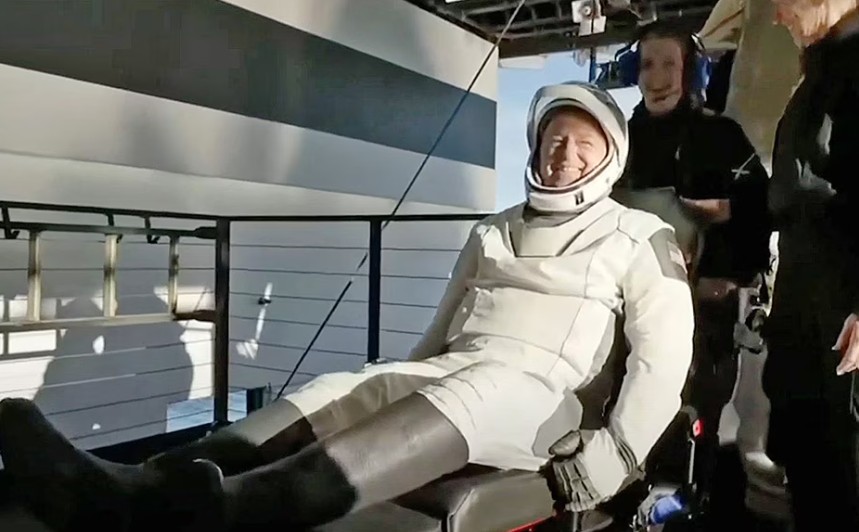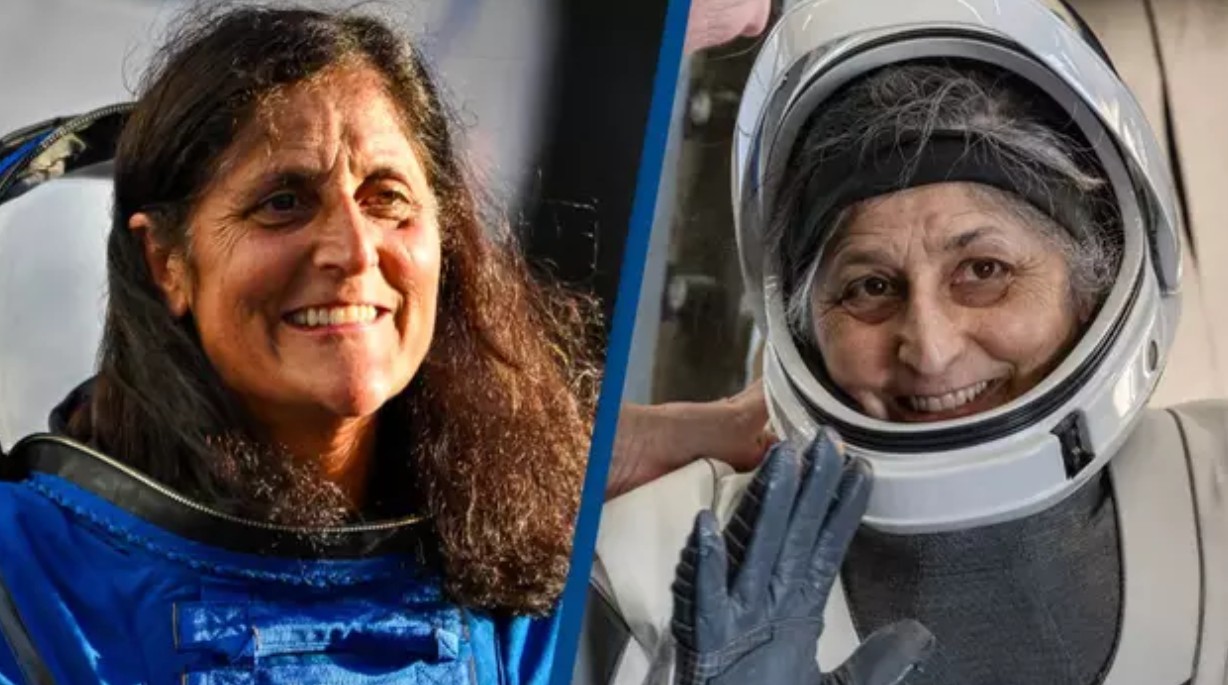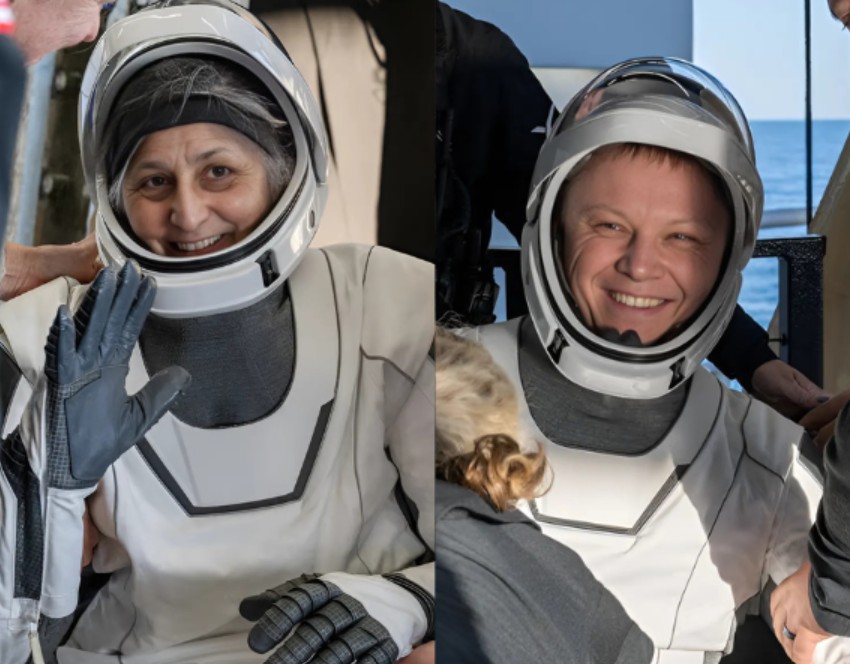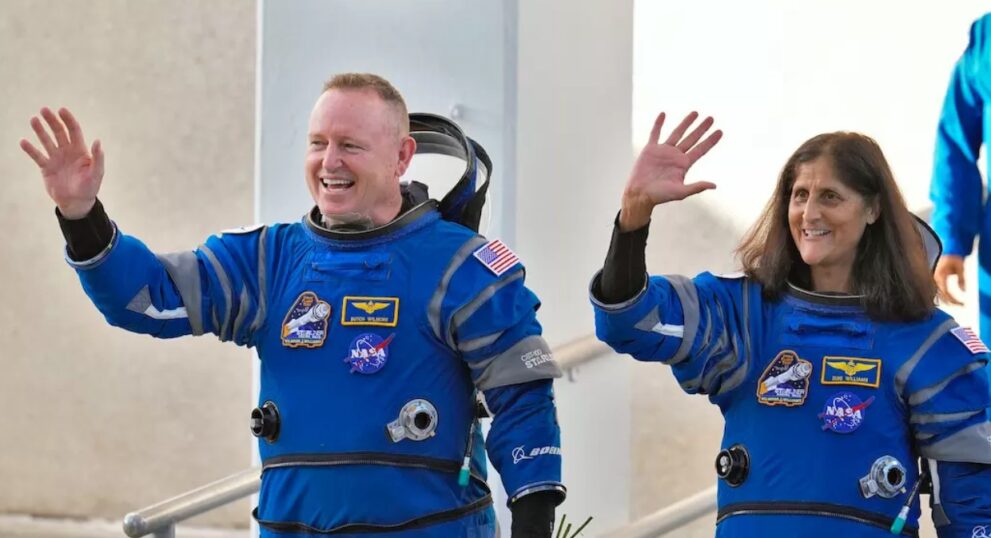NASA released photos of Williams, 59, and her fellow astronaut Butch Wilmore, 62, walking cautiously and shaking hands with NASA staff after completing medical exams, but the photos show Williams has “visibly thin” wrists, indicating rapid weight loss and loss of muscle in her arms.
Williams was also noted to have a transfusion cannula in her left arm which is supposed to help her regain electrolytes and stay hydrated as the microgravity they were exposed to in space causes dehydration.
 Sunny Williams after landing on Earth
Sunny Williams after landing on Earth
The photos also show that he now has gray hair, deeper wrinkles and a significantly thinner face.
Despite their fragile appearance, many say this is a very good sign that the astronauts are already walking, as there were fears that they would not be able to walk at all for several days.
Stuck in space
Williams and Willmore were scheduled to spend just eight days aboard the International Space Station (ISS) when they launched on June 5, but a series of technical problems with their spacecraft, Boeing’s Starliner, delayed their return, bringing their total time in space to 286 days.
A GP at Cassioburt Court in the UK, Dr Olalekan Otulana, said Sunita Williams’ seemingly thin joints could indicate muscle atrophy, particularly in the forearm muscles, which are used less in space, while Dr John Jackish, a biomedical engineer at Jackish Biomedical, said Williams had also likely lost weight, as well as bone density: “Without gravity, you can’t digest food properly, which in itself will contribute to muscle and bone loss.”

Additionally, lack of muscle movement during basic activities such as standing and walking can also cause tendons and ligaments to contract.
“I think what people don’t realize is that you need gravity to exercise your muscles, and if you don’t have gravity, your muscles don’t have enough resistance,” said Dr. Vinay Gupta, a pulmonologist and Air Force veteran.
Dr. Gupta also notes that women are more prone to bone loss due to smaller, lighter bones, as well as a drop in hormone levels like estrogen after menopause.
Digestive problems
Williams’ apparent weight loss also points to problems digesting food in a zero-gravity environment.
– Food doesn’t digest so well in space. When your stomach is upside down, it doesn’t move food through the digestive system as efficiently, so astronauts have to eat less and less often, he added.
This can lead to a shrinking stomach and an inability to consume enough calories to maintain body weight.
– Although great strides have been made in astronaut nutrition, it probably won’t provide your body with everything you get from a varied diet on Earth – says Dr. David Shafer, cosmetic surgeon.
In November, an unnamed NASA employee “directly involved with the mission” told The New York Post that Williams “wasn’t able to eat the high-calorie diet that astronauts have to eat” while on the International Space Station.
Dr. Jackish estimates that it will take Williams about three weeks for her digestion to return to normal, and until then both she and Wilmore “will have to eat very slowly.” For starters, it’s likely to be animal products like meat and butter, which are high in calories and essential nutrients like protein and fat.

Physical and psychological problems
Dr. Jackish noted that NASA personnel were holding Williams and Wilmore in recently released images, indicating balance problems.
– They have to hold them because they could easily fall. They lost the ability to maintain balance in the Earth’s gravitational field – he added.
– These astronauts were in space for nine months, and they were only supposed to be there for 10 days. Most of that time they couldn’t be sure they would ever be saved, which was incredibly stressful. Sunita Williams held on very bravely and said she was happy to have this extra time in space, but the possibility of a slow death in a space capsule was a nightmare scenario and it took its toll on her psyche. Worrying about whether you will survive at all is one thing, but showing everyone that you are not afraid is something completely different – says Lieberman.
In addition to slowly reintroducing food, Williams will likely need to slowly begin exercising and repeating basic movements such as walking and standing to regain her balance and reduce her risk of fracture.
But while the recovery will be long, Dr. Jackish believes both astronauts can make a full recovery.
– The damage to their bodies is not permanent, but they have to be very careful about exercise and diet to get back to normal – says Dr. Jackish.








